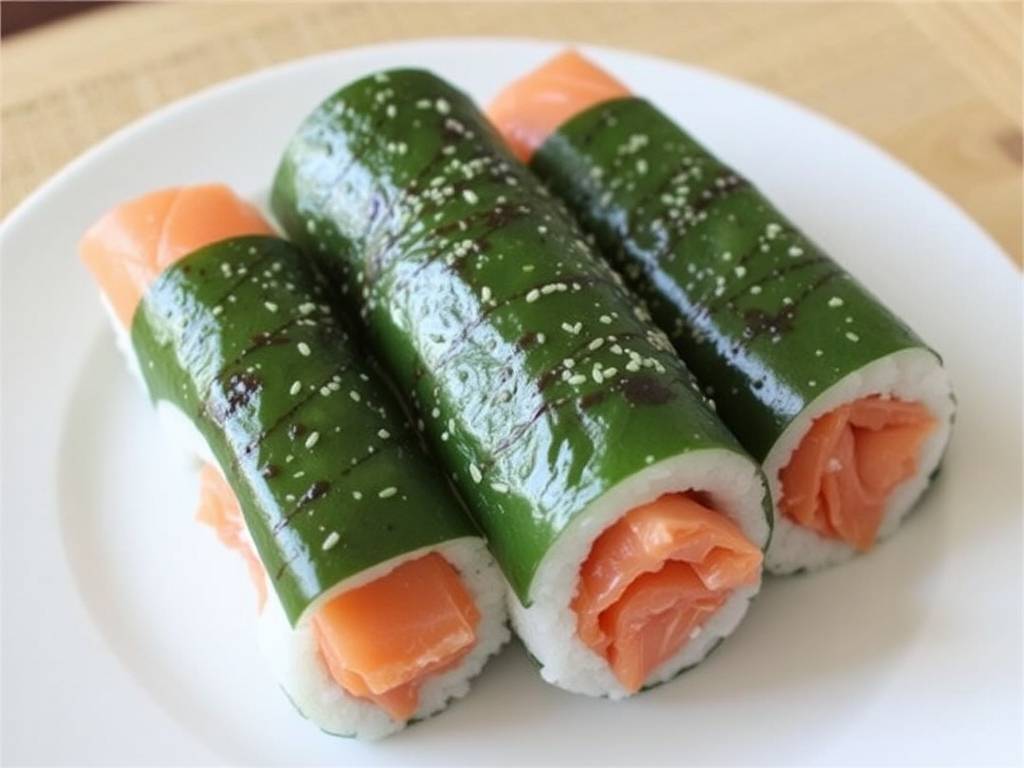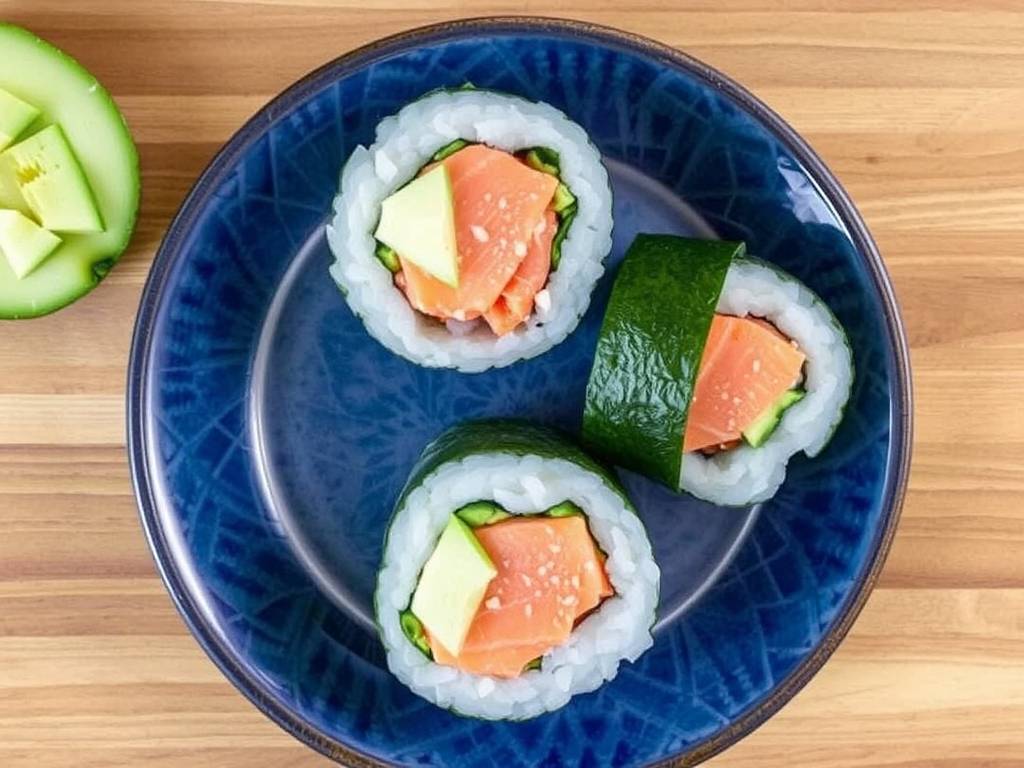The Art of Crafting Perfect Salmon and Cucumber Sushi at Home
The delicate art of sushi-making often seems shrouded in mystery, a skill reserved for years-trained Itamae (sushi chefs) in exclusive restaurants. Yet, the core principle of sushi is beautiful in its simplicity: seasoned rice combined with fresh, high-quality ingredients. One of the most accessible and delightful combinations for the home cook is salmon and cucumber sushi. This pairing offers a perfect harmony of textures and flavors—the rich, buttery softness of the salmon contrasts elegantly with the crisp, clean crunch of the cucumber. Embarking on the journey to create this dish yourself is not only rewarding but also demystifies a culinary tradition, bringing a taste of elegance to your own kitchen.
The foundation of exceptional sushi is, without a doubt, exceptional rice. Sushi rice (shari or sumeshi) is not merely steamed white rice; it is a carefully seasoned canvas. The choice of rice is crucial. Short-grain Japanese rice, such as Koshihikari or Calrose, is ideal because of its high starch content, which gives it the necessary sticky yet distinct grain structure.

The preparation begins with rinsing. Place your desired amount of rice (about one cup of uncooked rice will make enough for two to three rolls) in a bowl and cover it with cool water. Gently swirl the rice with your hand; the water will become cloudy from the surface starch. Carefully drain the water and repeat this process three to four times until the water runs almost clear. This step is essential to prevent the rice from becoming gummy. After rinsing, let the rice soak in fresh water for 20-30 minutes before cooking. This allows the grains to absorb moisture evenly, leading to a consistent texture.
Cook the rice according to your rice cooker’s instructions or on the stovetop. While the rice is cooking, prepare the sushi vinegar (sushizu). In a small saucepan, gently heat equal parts rice vinegar and sugar with a pinch of salt. A common ratio is 5 tablespoons of vinegar to 2 tablespoons of sugar and 1 teaspoon of salt, but this can be adjusted to taste. Heat just until the sugar and salt dissolve; do not boil. Set aside to cool.
The next step is perhaps the most critical: combining the rice and vinegar. Transfer the hot, freshly cooked rice to a wide, flat, non-metallic bowl—a traditional hangiri (wooden tub) is ideal, but a large glass or ceramic bowl works perfectly. Using a rice paddle or a flat wooden spoon, gently spread the rice out. Drizzle the cooled sushi vinegar mixture over the hot rice. Now, using a slicing and folding motion—cutting vertically through the rice and then folding it over—gently mix the rice. Be careful not to smash or stir the grains. As you mix, fan the rice with a fan or a piece of cardboard. This helps cool the rice quickly, giving it a glossy appearance and the perfect sticky texture. Once the rice is at room temperature and all the vinegar has been absorbed, cover it with a damp cloth to prevent it from drying out.
With the rice prepared, we turn our attention to the stars of the show: the salmon and cucumber. Safety and quality are paramount when dealing with raw fish. It is imperative to use sushi-grade or sashimi-grade salmon. This designation means the fish has been frozen to a specific temperature (-31°F or below) for a sufficient time to kill any potential parasites, making it safe for raw consumption. Purchase from a reputable fishmonger you trust.
Examine the salmon fillet. It should have a vibrant orange-pink color, a firm texture, and a fresh, clean smell of the ocean—never fishy. Using a very sharp knife, slice the salmon against the grain into long, thin strips, about half an inch wide. The sharpness of the knife is crucial; a dull blade will tear the delicate flesh. Set the beautiful slices aside.
For the cucumber, select a firm, English or Persian cucumber, as they have fewer seeds and a thinner skin. Wash the cucumber thoroughly. You can choose to peel it completely, leave the skin on for a bit of color and texture, or create a striped effect by partially peeling it. Slice the cucumber in half lengthwise and, using a small spoon, scrape out the watery seed core. This step is important to prevent excess moisture from making your sushi roll soggy. Cut the cucumber halves into long, thin julienne strips, similar in size to the salmon strips.
Now, the assembly begins. You will need a bamboo sushi mat (makisu), which should be wrapped tightly in plastic wrap to prevent rice from sticking to it. Place a sheet of nori (seaweed), shiny side down, on the mat. Have a small bowl of water with a splash of rice vinegar nearby to wet your fingers; this will prevent the sticky rice from clinging to you.
Take a handful of room-temperature sushi rice (about a cup) and gently spread it evenly over the rough side of the nori, leaving a one-inch border at the top farthest from you. Press the rice down lightly with your fingertips to create an even layer. Be gentle; you are patting, not mashing.
Now, lay your ingredients horizontally about one inch from the bottom edge closest to you. Place a few strips of salmon and a line of cucumber julienne side by side. You can add a thin line of mayonnaise or a dab of wasabi for an extra kick if you desire.

Here comes the rolling technique. Using your thumbs to lift the edge of the mat closest to you, start rolling the nori over the fillings. Tuck the edge of the nori under the fillings, applying gentle pressure to create a tight, compact roll. Once the initial tuck is secure, continue rolling forward, using the mat to shape and compress the roll. When you reach the bare border of nori, dampen it slightly with your vinegar-water mixture; this will act as a seal. Give the finished roll one final, firm squeeze with the mat to ensure it is tight and holds its shape.
Using a long, sharp knife—wiped clean and dipped in the vinegar-water between each cut to prevent sticking—slice the roll in half. Then, carefully cut each half into three or four even pieces. Wipe the knife clean after each cut for pristine edges.
Your classic salmon and cucumber roll (Sake Kyuri Maki) is complete. But the adventure doesn't have to stop there. You can also create delightful nigiri. For this, take a small ball of rice (about the size of a tablespoon) in your hand and gently form it into a small oblong shape. Take a slice of salmon and, if you like, dab a tiny amount of wasabi on its underside. Then, drape the slice over the rice ball, pressing gently to adhere. The result is a simple, elegant bite that highlights the quality of the salmon.
Presentation is the final touch. Arrange your sushi pieces artfully on a plate. Accompany them with small dishes of soy sauce for dipping, pickled ginger (gari) to cleanse the palate between bites, and a mound of wasabi. Serve immediately and enjoy the fruits of your labor.
Making salmon and cucumber sushi at home is a deeply satisfying process. It connects you to the ingredients, teaches patience and precision, and ultimately delivers a fresh, healthy, and impressive dish. With practice, the motions become fluid, and you can begin to experiment, adding your own personal touches to this timeless culinary art.






发表评论